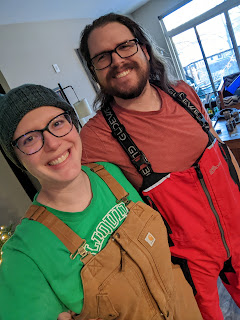Naples: 19-20 September
Istanbul: 20-21 September
The majority of our last couple days in Europe were spent on an airplane eating delicious, delicious Turkish Air food. We did make sure to see a few last exciting landmarks!
Our first flight was out of Naples. We didn't spend much time in Naples itself, but we did visit Ercolano! Ercolano is an Italian city that houses the ruins of the city of Herculaneum, destroyed by pyroclastic flow from Mount Vesuvius in 79 AD. It's essentially a smaller version of Pompeii, and was a better use of our limited time in the area. Unlike Pompeii, many buildings in Herculaneum still possess their upper floors. The gorgeous frescoes, mosaics, and tile work on walls and floors are intact in many buildings. Even more incredibly, wooden roofs, beds, and beams survived, despite being buried in up to 50ft of volcanic debris. Herculaneum is great to visit if you have just a few hours (Pompeii takes all day). We walked along the original paved streets and wandered through the ruins of the houses. Most houses are open for discovery, with a few areas roped off for preservation or safety. Our favorite parts were the gardens that were planted in various courtyards! It was easy to look at the rows of pear trees and image what it was like 2000 years ago in the city.
 |
| Walking through the streets of Herculaneum! |
 |
| Courtyard of a Herculaneum villa. |
 |
| Small wall niche with art still intact. The colors are incredible! |
 |
| More preserved wall art. You have to imagine how much color must have covered every wall. |
 |
| Floor mosaic in a public bath. |
 |
| Lunch was not eaten at home, so several of these cafeterias are scattered through town. Food was kept warm in these large brick containers. |
 |
| Many wooden mantels, stairs, and second floors were preserved after the eruption. The carbonized wood is still around today! |
 |
| Herculaneum residents from 2000 years ago must have been a bit shorter than Wil... |
 |
| Herculaneum was built on an oceanside cliff, and the chambers here were constructed to store boats. During the eruption of Vesuvius, the 300 people that attempted to hide in the chambers died there. The skeletons are still visible. The eruption added hundreds of yards of land to the shoreline; it's about half a mile from the ruins now. |
 |
| View over the ruins with Vesuvius in the background. |
We flew out of Naples to Istanbul, where we had a 20-hour layover (which translated to a night in Istanbul). Unfortunately we missed the Grand Bazaar by about an hour, but we stopped by a shop and tasted some excellent Turkish delight and baklava. In the morning we hit our last stop: the Basilica Cistern! The cistern was built in the 6th century AD under Emperor Justinian. It received water via aqueduct from a source 12 miles away, and acted as a water filtration system for the Great Palace of Constantinople and eventually Topkapi Palace. The ceiling is supported by 336 marble columns! And we can't forget that James Bond boated through here in To Russia With Love!
 |
| Columns of the cistern! So spooky! |
 |
| One of two Medusa heads; the other is sideways for unknown reasons. Their origin is unknown but they are thought to have been taken from a Roman building. |














Comments
Post a Comment